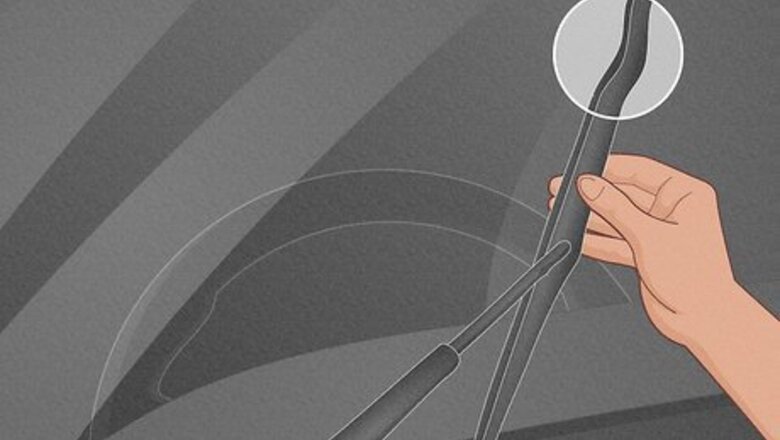
views
- Torn wiper blades are the most common cause of wipers not working. Replacing the blades is easy and cheap, though!
- If the wipers aren’t turning on, it could be a blown fuse, bad motor, or broken wiper controls. Extreme weather, loose pivot nuts, and freezing temperatures can keep wiper blades from engaging.
- While dysfunctional wipers aren’t an emergency per se, get this fixed soon so you don't run into visibility issues on the road.
Torn wiper blades or cubbers
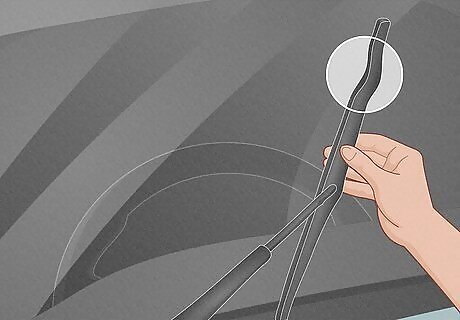
Most wipers have three core components. There’s the arm, which is the part connecting the wiper blade to the motor, the wiper blade, which is the plastic or metal part that moves across your windshield when you turn the wipers on, and there’s the cubber (sometimes called the element), which is the rubber part that actually brushes water away. The wipers won't work properly if the rubber or wiper blade tears or breaks. This is easily the most common cause of wipers not working correctly. Most drivers eventually run into this once every few years or so. Symptoms: The wipers still move, but are ineffective. You may notice one of your wipers looks like it has separated into two pieces, there’s a rubber piece flailing around when you turn the wipers on, or the blade itself has cracked in half, the blades or rubbers are torn. The fix: Replace the wiper blades on your vehicle. If you don’t want to bother tinkering with them yourself, see a mechanic. This is one of the cheaper repairs for a vehicle, clocking in at around $60.
Broken wiper controls
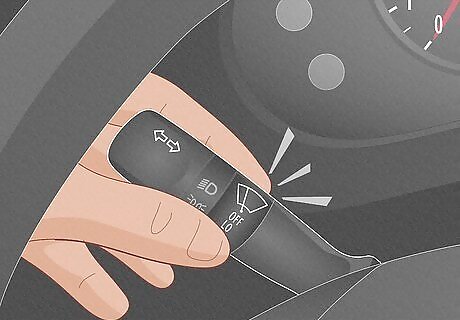
The wiper controls refer to the little dial or button you use to turn your wipers on and off. You also typically use the same controls to adjust the speed of the blades. If your vehicle has seen a lot of wear and tear over the years, these controls can wear down or break. Symptoms: The wiper controls are usually on the same assembly as your turn signal controls, so if your turn signal is also not working, that’s a huge sign the controls are broken. Your wipers are also likely to not engage at all when you turn them on, or they may turn on but you won’t be able to change the speed. The fix: The entire assembly likely needs to be replaced, but this requires some touchy electrical work. See a mechanic to have them perform the work. This will likely run around $200.
Blown fuse
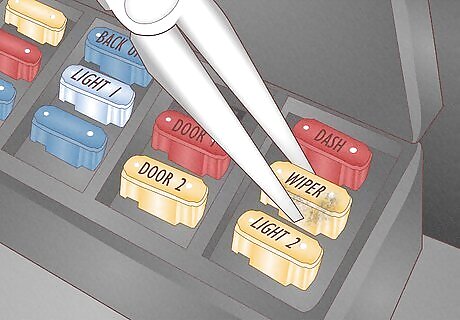
Every component in your vehicle that requires electrical power has a corresponding fuse that protects the component from short circuiting. If there’s been a sudden surge of power or something is off with the electrical wiring, it could blow the fuse for your wipers. Symptoms: Your wipers stopped working suddenly and the wipers won’t move up or down anymore. The fix: Locate the fuse box in the engine bay and use your manual to identify which fuse is connected to your wipers. Remove the fuse and test it using a multimeter. If there’s no charge, purchase a replacement fuse and insert it into the fuse box slot. A mechanic shouldn’t charge more than $60-100 if you don’t want to be bothered, though.
Bad wiper motor
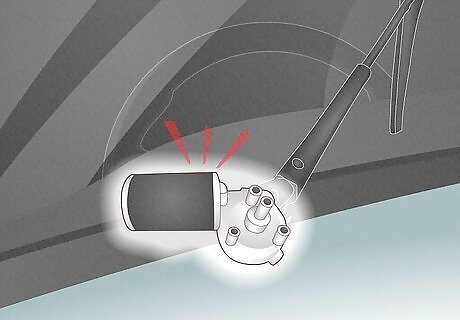
Your windshield wipers are powered by a small motor, aptly named the windshield wiper motor. That motor gets a ton of usage over the years; just think about how often you need your wipers! So, if that motor malfunctions or begins to die, your wipers will not work as intended. Symptoms: The speed of your windshield wiper decreases, you hear weird noises when you turn the wipers on, the wiper speed won’t change or the wipers just stop moving entirely. The fix: The motor needs to be replaced, so see a mechanic to have the motor tested and swapped out or repaired. This shouldn’t cost more than $100-225.
Damaged wiper arms
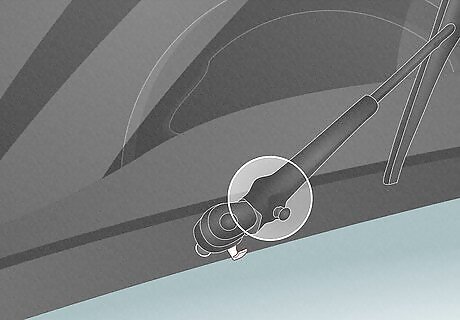
Physical damage to the wiper arms will keep them from working correctly. The wiper arms connect the blades and cubbers to the motor. But if the wiper arms are cracked, they won’t apply the proper pressure to the blades and cubbers. This can leave huge sections of your windshield unprotected when it rains or snows. Eventually, a damaged wiper arm will snap and the entire assembly will fly off. Symptoms: One of your wipers stops moving smoothly across the windshield, or there’s a lag in one of the arms as it moves. You’ll usually be able to spot any cracks or damage in the arms as well. The fix: The damaged arm needs to be replaced, so see a mechanic to have them repair it. This is usually a little more involved than just changing out the blade and cupper, so you’re best off leaving this to the pros. Expect to spend around $60-100.
Frozen wiper arms

If the temperatures are below freezing, your wiper arms are likely just frozen. This is relatively common, and it isn’t a sign that there is anything intrinsically wrong with your wipers. Symptoms: It’s below freezing and you have no other problems with your vehicle. When you turn the wipers on, you might hear the motor engage and the wipers try to move, but they won’t get much traction. The fix: Scrape all of the ice off of your wipers. Then, turn the vehicle on, let the engine warm up for a few minutes, and defrost your windshield. After 5-10 minutes, turn the wipers on.
Loose pivot nuts
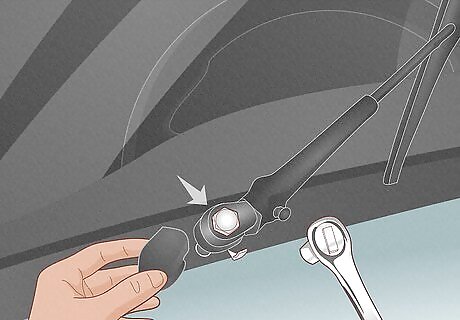
The pivot nuts are the small fasteners connecting the wiper arms to the motor. Over time, these nuts can come loose from all of the repetitive movement of the wipers. If a pivot nut becomes loose enough, it will relieve the tension in the wiper blade and keep the cubber from pressing against the windshield hard enough to remove precipitation. Symptoms: The windshield wipers move at the proper speed, but the cubbers aren’t pressing against the windshield hard enough. The two wipers may move slightly asynchronously as well. The fix: Pop off the round cover at the base of the windshield wiper with a flathead screwdriver to expose the pivot nut. Grab a socket wrench and tighten that nut. Then, test your wipers. Continue this process until the nut is tight enough that the wipers are moving in tandem together at the proper pressure.
Extreme weather
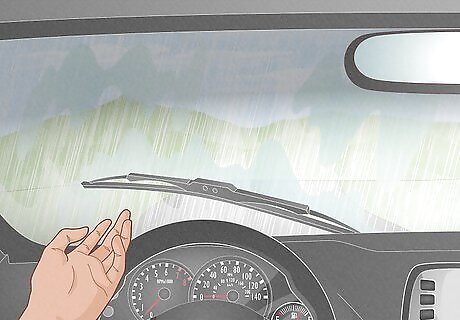
Your windshield wipers do have limitations when it comes to the amount of precipitation and stress your wipers can handle. If it’s raining or snowing exceptionally hard, your wipers may not be able to handle the issue, even on their strongest/fastest setting. Symptoms: Your wipers are moving as fast as they normally should and you can see the wipers removing snow and rain as they move, they’re working as intended. The fix: There’s no problem to solve here—just slow down and pull over if necessary. If this is a frequent problem for you, consider upgrading to frameless curved wipers. Most vehicles use cheaper steel or rubber wipers, but the frameless models are much stronger.

















Comments
0 comment